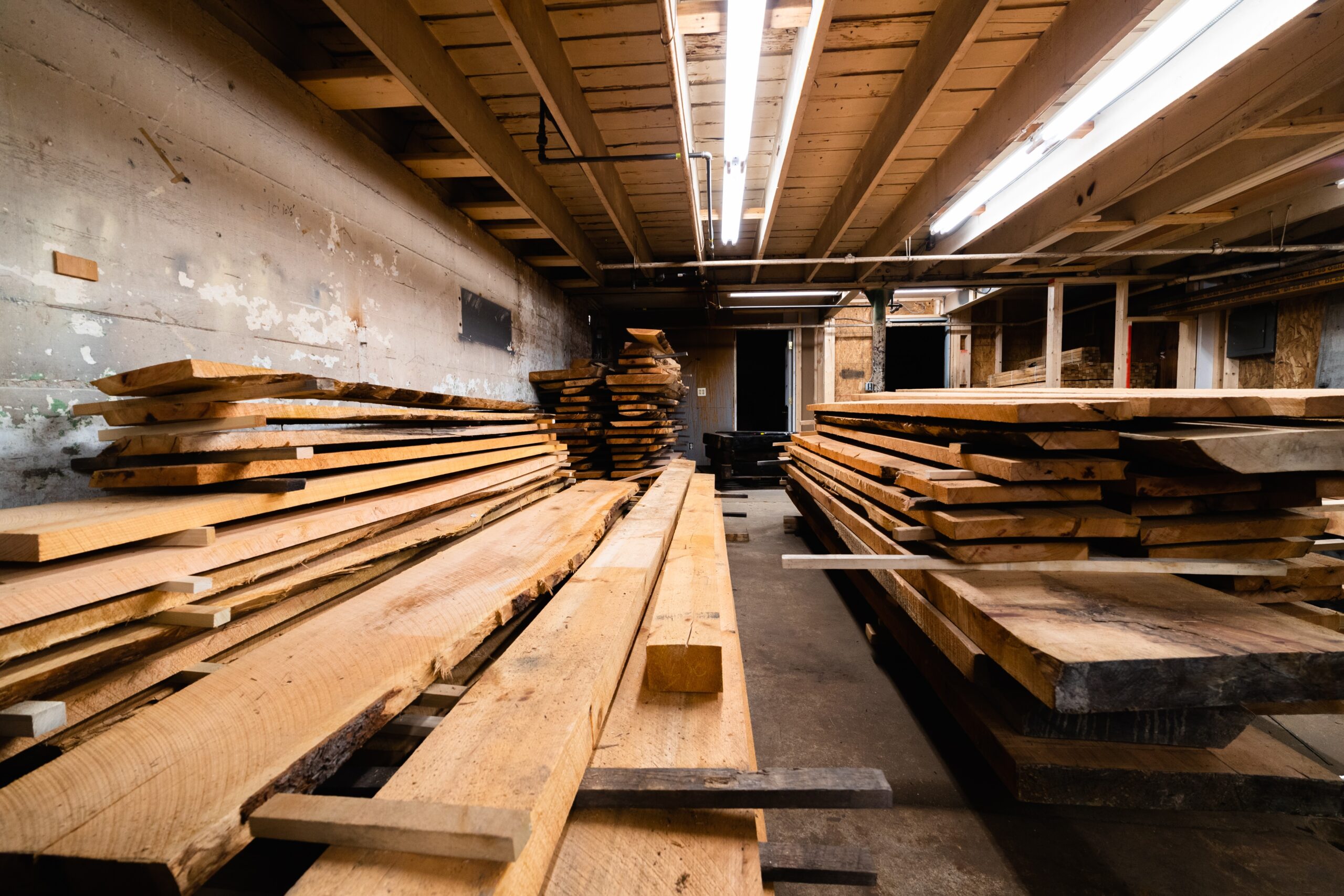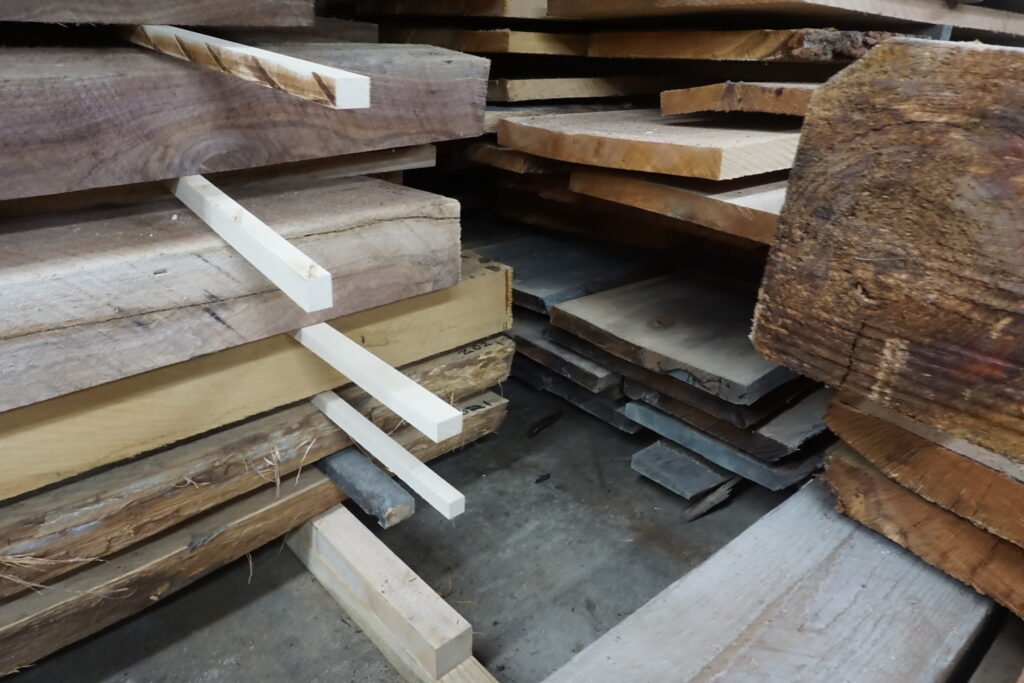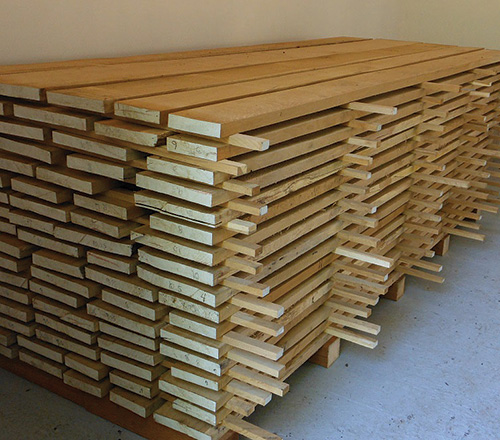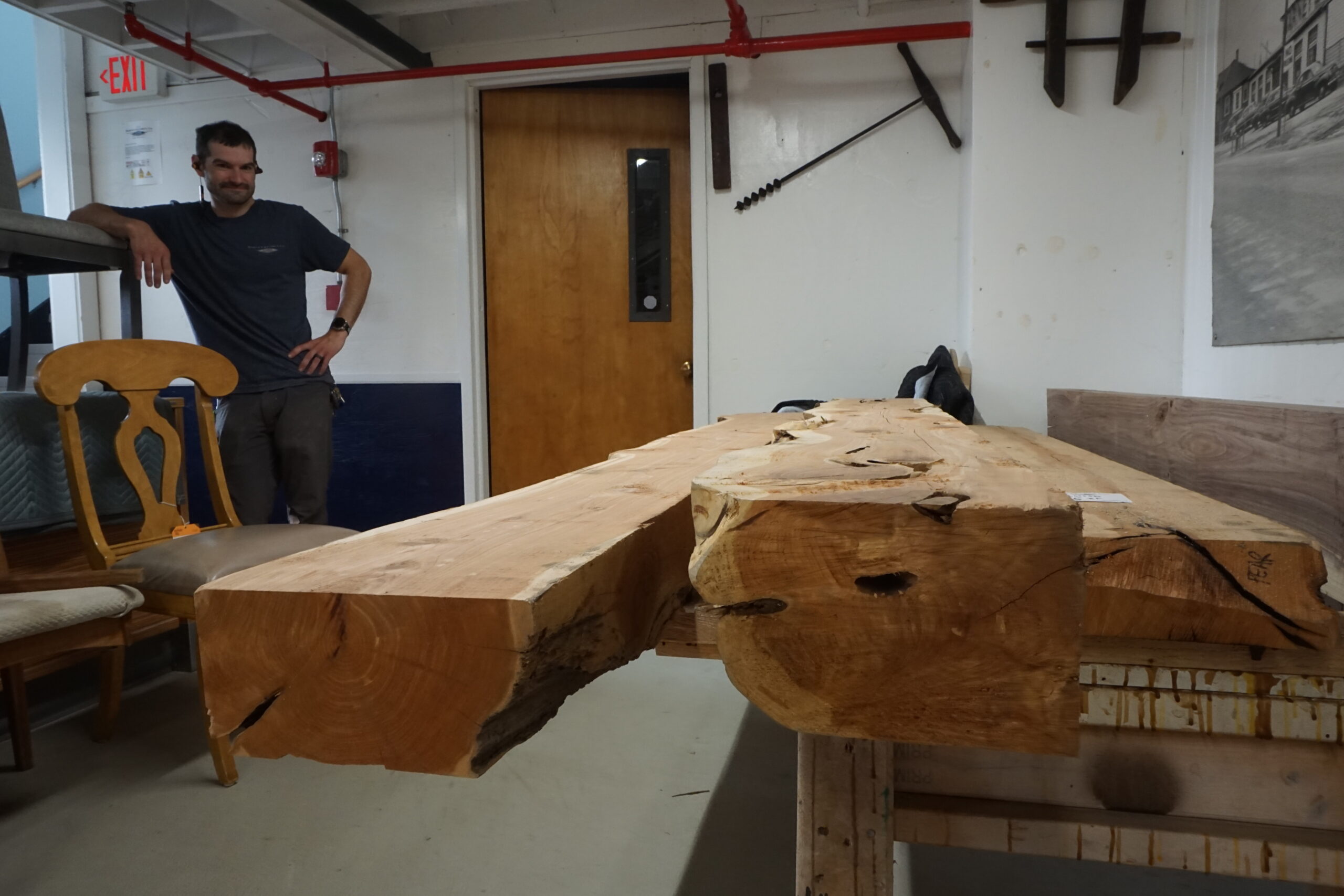About Rough Lumber, Sourcing, and Drying It.

Understanding Rough Lumber
We sell a lot of rough lumber, both hardwoods and softwoods, at Barney & Carey, and customers ask a lot of questions about it. As a rule of thumb, hardwoods are best kiln dried, as are finish softwoods used for trim, furniture, and flooring. And yes, there are many exceptions.
Kiln drying allows the wood to be dried to a substantially lower moisture level of 6–8%, while air drying usually winds up at around 12% or more. For this reason, we purchase most of our hardwoods, foreign and domestic, kiln dried.
If you use air dried lumber for interior products, there is greater risk of shrinkage, checking (surface cracking), and/or distortion. Most homes in our area tend to have very low humidity levels in the winter, which adds to the problem.
As you might imagine, our own house sports a lot of fine woodworking, created by Joe Markt, Jim Hardy, and other Barney & Carey craftspeople. To protect it, we use a humidifier, and it never fails to amaze me with the amount of water it requires. As a result, we never have shrinkage problems.

When Kiln Drying Isn’t Best
As I said, there are exceptions, one being very thick boards, beams, or slabs. These often do not respond well to kiln drying, which can cause serious checking and distortion. When we buy such heavy timber, in all species, it is often “green” (recently cut and sawn), and we dry it ourselves.
The process involves square cutting the ends of the stock, which are usually jagged from the chainsaw. We let the ends dry out a little, then coat them with high temperature melted paraffin wax. Some mills use a thin paint coating on hardwood ends, enabling them to skip the step of trimming. I was taught to use wax; it’s better, and at my age, you ain’t gonna change my mind!

The Drying Process and Timeframe
We then stack the lumber with “stickers” (thin wood strips) under each course, with an inch or more between the pieces. This, along with the constant use of fans, allows good air circulation for even drying.
Generally, one can figure about one year of drying time for each inch of thickness, so a four-inch thick piece can take up to four years to dry. It is labor-intensive and ties up warehouse space for a long time. We monitor the stock with a moisture meter until it is ready for use.
Despite our precautions, over time some stock may check or warp. This is why we buy lumber which is thicker and wider than the end product, so the jointer and thickness planer can correct any distortion. We won’t sell it until it is as dry as it can be. In many cases, we get the moisture content below what is usual for air drying.

Buying Air Dried Lumber
It’s great to buy boards and slabs which have already been air dried for some time, but that isn’t often. It lets us see any defects that are appearing before we buy, which are unpredictable when buying green stock.
Most hardwoods, native or tropical, are more prone to checking, etc., when not dried slowly enough in the kiln. Like all things related to wood and woodworking, the drying of lumber is an art.
Most sawmills processing native lumber merely sticker stack the green sawn boards in outdoor piles. For them, it’s all about production, and there is usually quite a bit of waste. The top row of boards gets beaten up by the sun and the weather, and usually becomes firewood.
Kiln Dried Firewood—Does It Make Sense?
Speaking of which, I notice a number of mills selling “kiln dried firewood,” which seems to defeat the purpose, doesn’t it? We mostly use firewood in stoves to take a bite out of heating costs, so why would we want to pay more for it?
It only takes a year or so to “season” split firewood, so why the rush?
We have used wood stoves at Barney & Carey since 1978, and we cut and split most of the logs ourselves. We also burn our wood waste from the shop. As the saying goes, “Firewood warms us three times: when we split it, when we stack it, and when we burn it!”
BTW, less than 10% of new homes are now built with masonry wood burning fireplaces.

